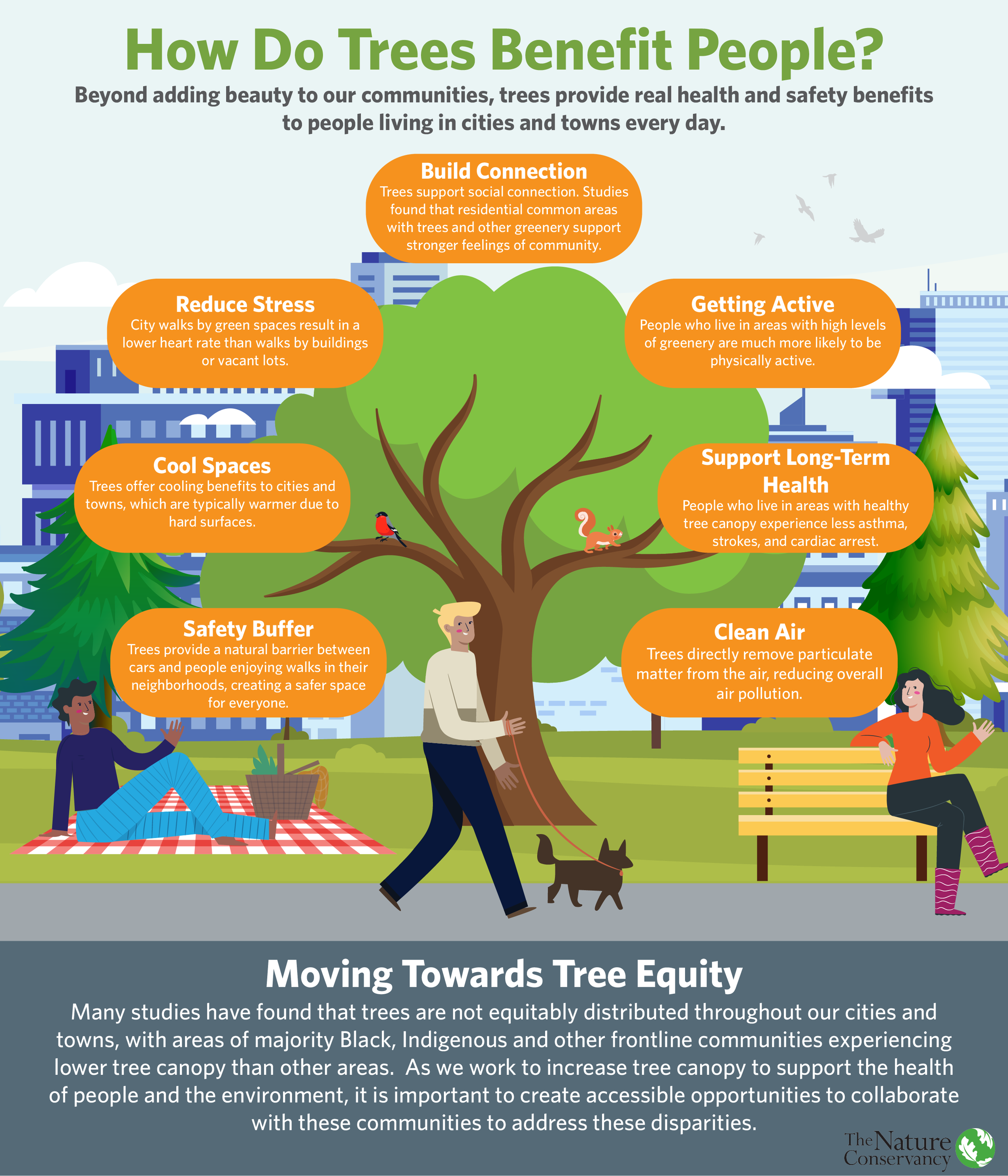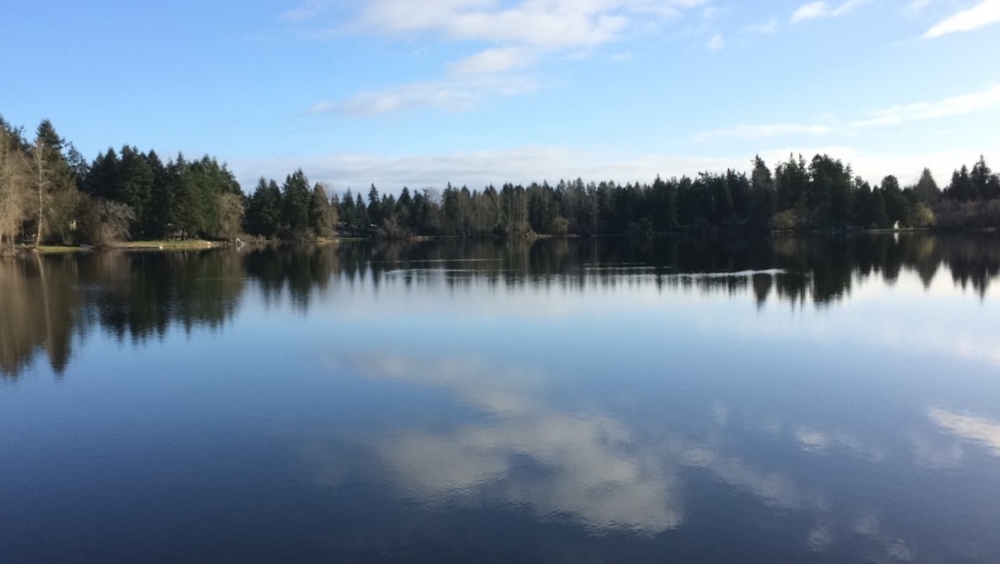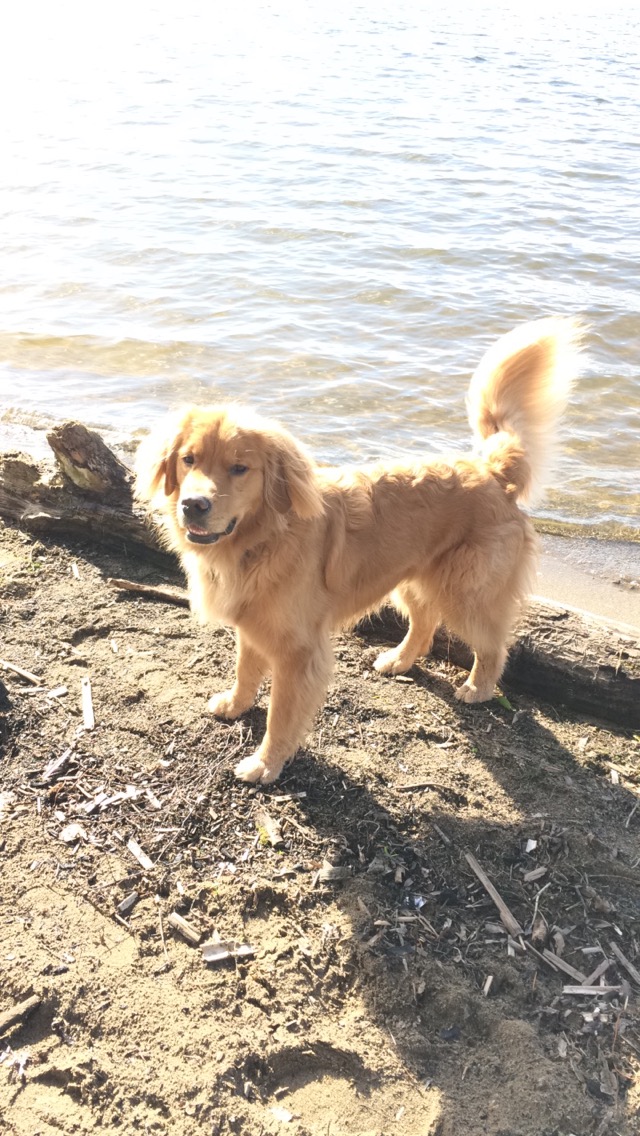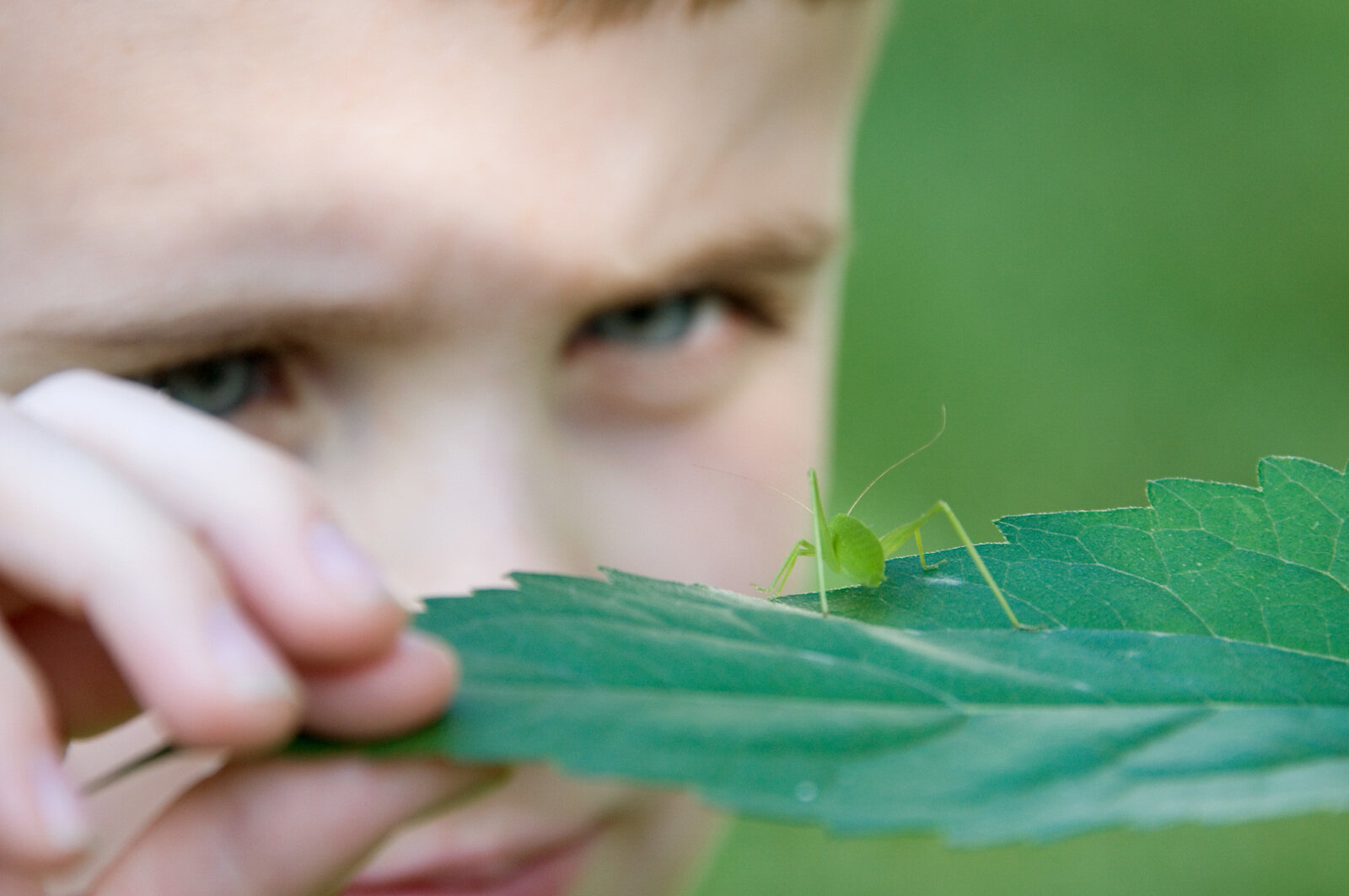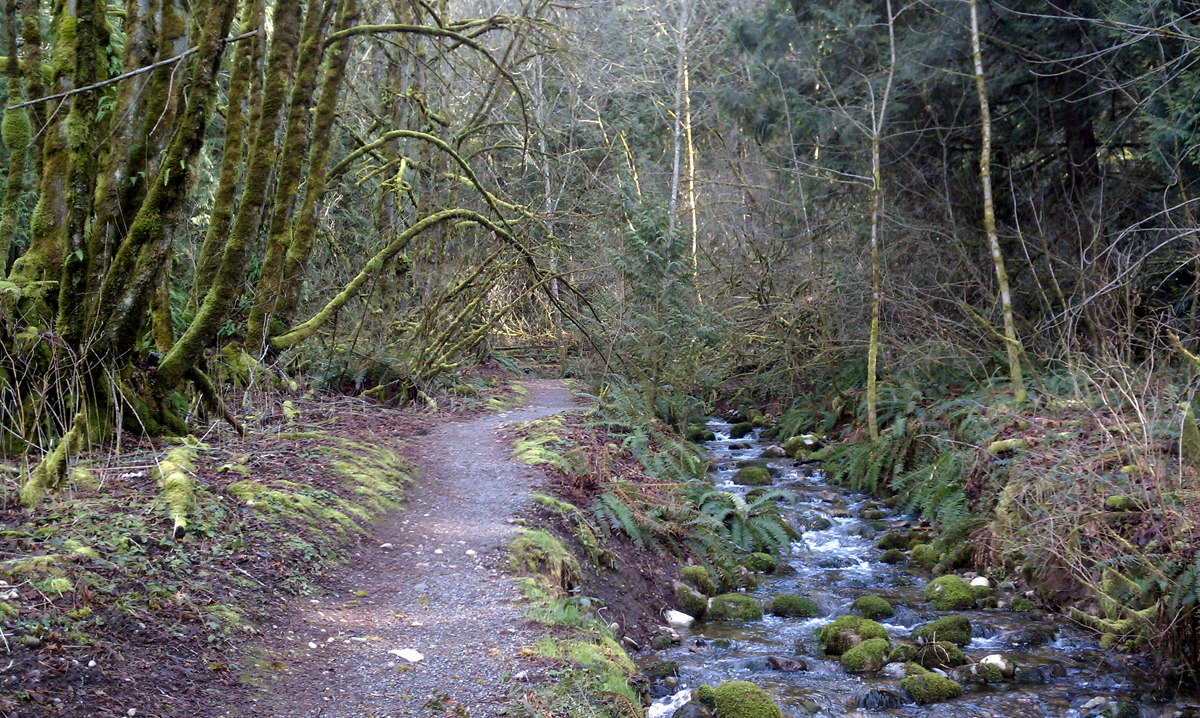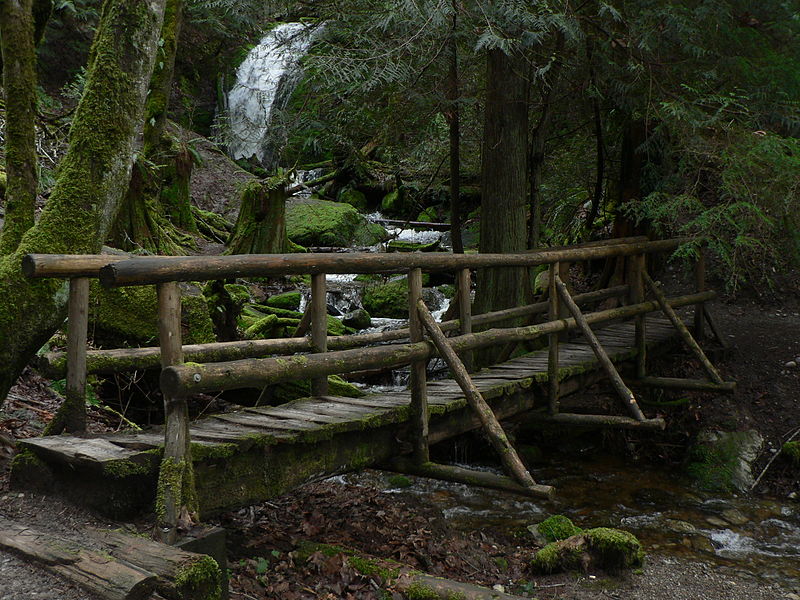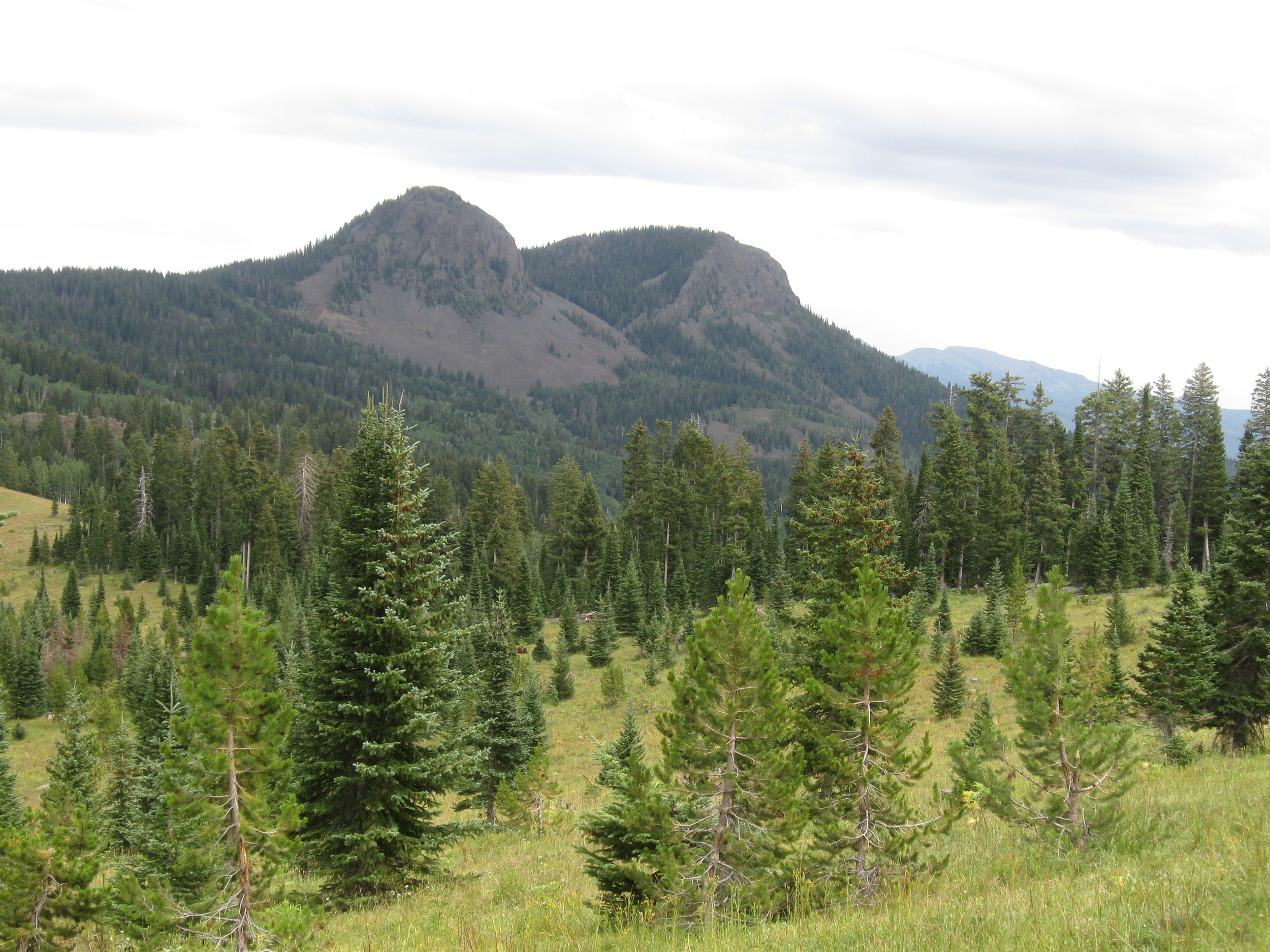Through our GRIT work, we are finding that temperature declines linearly with tree canopy cover. Because this relationship is linear, it suggests that there is no threshold tree cover required to affect air temperature; instead, every bit of additional tree canopy seems to help reduce local air temperature on hot days.
Rebuilding an Urban Tree Canopy: On the Ground with GRIT
A unique research project, Greening Research in Tacoma (GRIT) brings together community partners and perspectives to paint a more detailed picture of how neighborhood residents *actually* experience green infrastructure, like tree plantings.
In partnership with the @City of Tacoma, @Tacoma Tree Foundation, and @University of Washington, GRIT’s community-minded approach will shape how we design and plan greening initiatives to be more equitable and effective for people everywhere.
Health Benefits of Trees
Our Most Memorable Maps and Graphics from 2018
An Urban, Suburban Trek in Bellevue
Written and Photographed by Carrie Krueger, Director of Marketing, The Nature Conservancy in Washington
We want to know: Where do you see Nature Nearby? Share your stories and images below for the chance to be featured on a future blog post!
Our state- and our world – are becoming increasingly urban. For some of us, that means that what was once a rural suburb is now a bustling city filled with homes and high rises. Yet as we grow, it’s vital we keep a strong connection to nature including wildlife corridors, water retention areas and places we can go for peace and solace.
Bellevue has gone from sleepy bedroom community to hub of commerce and industry. But its string of pearls is a connected series of parks allowing us to travel from Lake Sammamish to Lake Washington through forests, wetlands, farms and gardens.
Most recently, I began this trek at Weowna Park on the shores of Lake Sammamish. In the crisp morning air, we climbed through lush, mossy forests, across streams, occasionally pausing to look back at the lake below. We emerged into a residential area and wandered through lovely neighborhoods, past the Lake Hills Park.
Phantom Lake and the surrounding wetlands were teeming with birds, and as we made our way through the Lake Hills greenbelt, many walkers carried binoculars. The meandering greenbelt features towering trees, wetlands and even agriculture in the form of blueberry farms where signs of a tasty harvest next summer are just beginning. At the northern end of the greenbelt is beautiful Larson Lake – so peaceful though thoroughfare traffic, shopping and other signs of urban life are close by.
Following the trail behind and around Sammamish High School, we were again reminded that we are in the middle of a burgeoning city where the already large high school is being expanded to accommodate growth. But just beyond, we were plunged back into nature, joining the powerline trail and then the forest behind Kelsey Creek Farm. In the creek, salmon still spawn and the surrounding wetlands hold and filter water. In the middle, farm animals are a draw for kids – and their parents.
Just three blocks of neighborhood walking took us to the rich forest east of Wilberton Park. Ballfields and a playground on the other side connected us to the Bellevue Botanical Gardens. Here there is much to see in the form of immaculate, groomed gardens but also a wild canyon experience complete with a suspension bridge.
From the serenity of the gardens, we experienced the most urban and perhaps least enjoyable part of the trek – a brief walk directly parallel to the much-used 405 freeway. It’s hard to ignore growth and demands on nature when walking next to a jam-packed freeway. Fortunately we were quickly under the 405 and into the spectacular Mercer Slough. It’s remarkable that such an important and natural place exists in the shadow of downtown high-rises. Heron, turtles and other wildlife are common sights and this time of year, hints of spring popping up everywhere.
From the slough, we shared the trail with bicyclists as we made our way to the shore of Lake Washington at Enatai park. The park is a perfect place for considering the interface between nature and development because it is set literally underneath the I-90 freeway. Yet looking out on to the lake, nature abounds as does wildlife and recreation.
Our trek through Bellevue demonstrates many of the benefits of creating a strong tie to nature in the midst of intense growth. Parks, greenbelts and even small pockets of plants foster wildlife, cool the air in the summer, clean urban storm water runoff and give us a place to retreat and reenergize.
Puget Sound – It’s Time to Tackle Stormwater
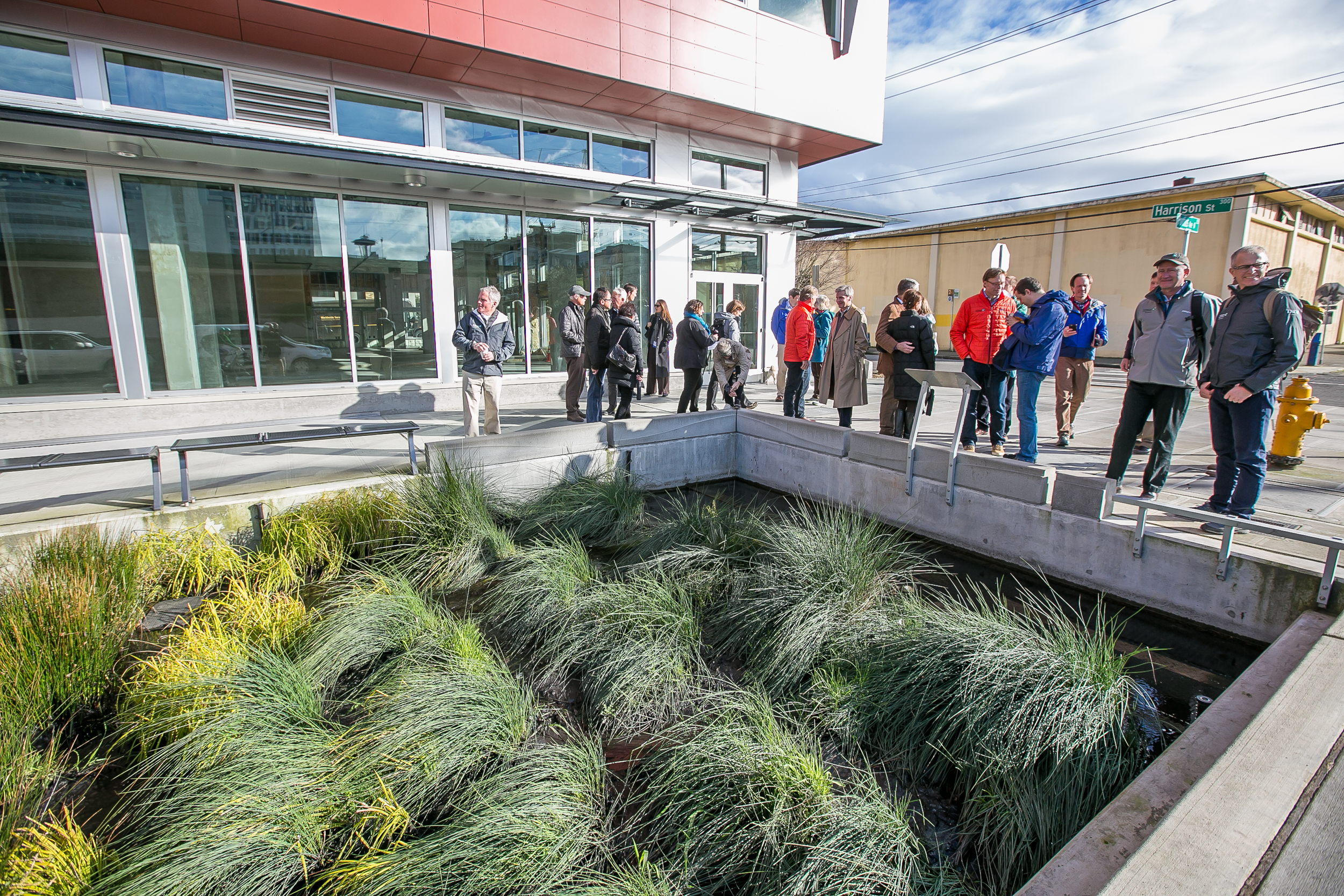
Green Infrastructure Summit Brings Leaders together for Innovative Natural Solution
Written by Jeanine Stewart, Volunteer
Photographed by Paul Brown, Northwest Photographer
Infographics by Erica Simek Sloniker, Visual Communications
Stormwater sneaks up on the Seattle region so innocently, as rain droplets falling through the misty air. Yet when it hits the ground, it picks up bacteria from lawn fertilizers, copper from break pad deposits, oil and other pollutants that become deadly to salmon and Orcas in Puget Sound.
The Washington Department of Ecology calls it the biggest water pollution problem in the entire state, and yet lacks a comprehensive plan to tackle the problem.
That’s why the annual Green Infrastructure Summit each February is so exciting. This event, co-hosted by The Nature Conservancy, brings together key stakeholders to begin a discussion that will lead to collaboration for years to come.
Here, government, non-profit, business and research organizations will share what they’ve done already. There have been some great strides made. Green infrastructure such as rain gardens, which keep stormwater from trickling into places it doesn’t belong, have been installed around the city. However, there simply aren’t enough of them.
“We have to move beyond projects that are just another cute street, to tackle this problem on a scale thatwill make a difference to all of Puget Sound,” said Jessie Israel, Puget Sound Conservation Director for the Conservancy.
Stormwater pollutes the marine environment, leaving devastating impacts in its wake. A study flagged up by the Seattle Times recently said stormwater runoff can kill adult fish in as little as 2.5 hours. (Watch the Conservancy's video on this extraordinary research)
Stats like these are why The Nature Conservancy has laid out big goals for tackling this problem. In five years, here’s what we want to see:
- 1 billion gallons of stormwater treated using green infrastructure
- 1 million trees planted or maintained to impact freshwater quality, sequester carbon and benefit underserved communities
- 20,000 new raingardens in private spaces
- Green spaces created and enhanced in ways that better quality of life
- Cross sector, issue, and jurisdictional leaders deploy effective leadership and focus investments in green stormwater infrastructure
LEARN MORE ABOUT OUR WORK IN CITIES
The Value of Green in Gray
Written by Katie Martens, Volunteer Writer
Photograph by Aurora Photos
What is green space? Its generic definition is an area of grass, trees, or other vegetation set apart for recreational or aesthetic purposes in an otherwise urban environment. Usually these spaces are public and used for community purposes. Green space is a social, political, economic, and cultural topic of interest. It crosses barriers within city life, allowing community to flourish and develop. The city government develops and maintains green space, neighborhood activists use green space for exercising their rights, families use green space for community connections, and wildlife uses green space as their habitat. Green space has multiple functions for various organizations, people and animals. It is a valuable asset and resource to the city, its people and wildlife. I’m sure that economically, green space could be evaluated and translated to have a numerical value.
Politically, organizations and governments could create lists and arguments focused on green space’s value in abstract and intangible terms. Biologists could organize hard data that expresses green spaces importance and function for wildlife. While these are great and important resources, I will provide a short piece on green spaces’ value in my life.
Nature is the most eccentric and beautiful thing that I have ever seen in my 22 years on this planet. It is dynamic and interactive. It encourages self-reflection, self-care and self-awareness. In no other space can a human tangibly experience being part of something larger than themselves whilst simultaneously experience their innate solitude. Green space is an opportunity to experience a beautiful escape of city life. It’s the cheapest and most convenient form of meditation and therapy.
Green space is essential to my life; it has influenced my entire Seattle experience – where I decided to live, where I wanted to work, how I relax, and where I explore with friends and family. For me, its value is incalculable and thus, has become a personal necessity. I can find green space in the city simply by actually observing what is around me. The streets are lined with gorgeous colors of autumn changes, the grass on lawns has an increasing vibrancy, there is an against- all-odds plant peaking out of my gutter, I walked 3 feet away from a crow in a park and we were both okay with it, I caught up with a friend walking around Green Lake, I saw someone trip on a tree root protruding from a side walk; these are all meaningful experiences I have within green space. Green space can be as large as Golden Gardens Park and as small as the trees lining busy streets. Green space is a vital resource for city dwellers and its beauty deserves to be appreciated and utilized.
As cliché as this might be, John Muir once said “In every walk with Nature one receives far more than (s)he seeks”. So I encourage you to escape the gray and enter into the green and I promise you, it will be a valuable experience.
Learn More About Our Work in Cities
Urban Conservation
Written by Greta Nintzel, Volunteer Writer
Photograph by Flickr Creative Commons/Aaron
The concept of cities and nature often feel at odds. Cities, now home to the majority of us, are dense, buzzing, vital hubs of thought, culture and commerce. And on the flip side, they can be demanding, draining and isolating. Nature is often thought of as everything that is not human activity; plants, trees, rivers, other animals and insects. I’m not sure of thinking about cities in opposition to everything else is a good idea.
With this in mind, what is the value of urban greenspace? Well, can you imagine living in a city that doesn’t include nature? It’s impossible. Nature softens the sharp angles of the urban landscape and reminds us of life in a broad sense. It can reposition us and offers a less frantic pace in our often locomotive lifestyles.
Where can you find Nature in a city? Parks, arboretums and waterways are obvious natural spaces. But why not just explore your yard? Or take a walk in your neighborhood and just notice nature in your daily routine?
Here are few experiences I’ve had in the city: watching a family of crows teaching their blue eyed fledgling how to fly in a field adjacent to my home, catching sight of a bald eagle overhead with a fresh caught salmon in its talons while trekking through a city park or observing a harbor seal surfacing and surveying the shoreline near the piers downtown.
What can we do to maintain balance in our urban landscapes? We can start civic conversations about engineering water catchment systems that slow down and filter storm runoff and ease the impact on waterways, continue utilizing the desolate features of urban infrastructure for plantings (like the live roof movement) and imagine greenways and parks as migratory routes for wildlife of all sorts as well as buffers for human activity. As individuals, we can provide native plantings in yards or pots or neighborhood gardens and consider vegetation other than grass for curb strips and thoroughfares.
For me, nature embodies the awe and wonder of existence. We are on the ride with it; in the changing seasons, the animal and insect migrations, and in groves of trees, magnificent pillars of life. Nature provides everything and accommodates us fully. As we continue to make more space for our humanness in cities, considering nature will keep our urban environments even more vibrant for all.
Learn More About Our Work in Cities
Close Encounters of the Urban Kind
Written by Susan Rae Sampson, Volunteer Writer
All it takes to encounter nature in an urban environment is a setting that’s even just a little bit wild. Just mildly wild is what my neighbors and I got in Seattle as we moved into our rows of tidy houses on 40’x60’ lots, on streets with broad planting strips, on blocks bisected by alleys separating our back yards. When our plat merged with another plat that was staked out along different compass points, builders left a triangle at the corner of the subdivisions undeveloped.
I’m sure that whoever platted our neighborhood in Seattle was just doing what was profitable 100 years or so ago; he didn’t intend for it to be wild. But by now, the triangular lot between plats is an open space that supports mature trees, raucous crows, and an occasional flush of meadow mushrooms.
Most of our planting strips are mowed down to crew-cut grass, but some of the alleys are slightly overgrown with blackberry brambles and naturalized escapees from gardens, like fennel and mint. (One friend cleared her lot of brambles and discovered terraces underneath, planted with an Italian garden, including an espaliered fig.) Wild animals have discovered the alleys, and we neighbors have discovered the animals--not that all of our encounters have been felicitous. Joanne was charmed by the sound of squirrels on her roof, until somebody told her they were actually rats in the attic. Caroline came face to face with a hissing raccoon that was fishing in her koi pond. Driving home late one night, Fred saw a coyote trot nonchalantly down the alley and up onto a back porch to look for dog food, or else for a small pet to eat. A lady at the health department assured me that I didn’t need to worry about my bats, so long as they stayed up under the eaves. Animal control responded to capture a swarm of bees.
The late poet Stanley Kunitz was an avid gardener who once compared a poem to a garden that needed to be pruned, but not too much. His ideal for a poem also describes an urban garden that is just wild enough to be a natural habitat: “There has to be a certain degree of domestication in a garden. The danger is that you can so tame your garden that it becomes a thing. It becomes landscaping.” I, for one, prefer a slightly wild garden to a sculpted landscape.
Kunitz,Stanley,The Wild Braid, p.78. Copyright 2005, W.W.Norton & Co.
Learn More About Our Work in Cities
Turn off this App Go Outside
NO URBAN DWELLER LEFT INDOORS
Written by Lauren Miheli, Volunteer Coordinator
Recently a friend invited me to an event called “Party Bus Hike: Cougar Mountain Grand Traverse.” Now I’ve been invited to many parties and events in my day, but never anything like this! I was intrigued and sent in my RSVP immediately.
If you’re like me and grew up in a lower-income urban community, honestly, outdoor activities can be a little intimidating. Sometimes it feels like you need a lot of expensive gear just to fit in on the trail. Heaven forbid you wear a cotton shirt instead of the most high-tech, synthetic, moisture-wicking garb money can buy. And how are you going to get to a trail head without a 4-wheel drive sports vehicle? My clothes are for urban adventures and I don’t have a car, so even though I work for The Nature Conservancy, I am embarrassed to admit I don’t get out and hike as much as I’d like to. What I do have is a sense of adventure and an ORCA card, which I was excited to learn, would be enough to get me out of the city and to the trailhead!
The plan for the day was to meet in the International District, take a bus to Bellevue, hike 11 miles through the Coal Creek and Cougar Mountain trails to arrive in Issaquah and catch a bus from the Issaquah Transit Center back to Seattle. A group of about 10 people met for this mini-expedition. On the bus ride out we got to know each other, and we solidified our new friendships during the hike. The trail was moderate, with babbling brooks, the soothing smell of pine in the air, and a peaceful waterfall lunch stop. Bussing back was a breeze, we all connected with each other and relaxed, and no one had to worry about staying awake at the wheel to get everyone home.
The hike was organized by Adrian Laurenzi, a local Software Engineer who co-founded an app called TOTAGO (developed by Open PlanIt and now public on the Google Play Store), that will help urban outdoor enthusiast’s access great trails using bus systems. I could not be more excited for this idea! Just think of all the people who could benefit from this tool. College students, young families, urban dwellers, the list goes on. Don’t have money for a car, gas, or parking fees? Busses are relatively affordable for everyone. Even if you do have a car, chances are that as someone who loves nature you’ve felt guilty about your carbon footprint and wouldn’t mind reducing your emissions.
Society has a long way to go in making outdoors activities accessible to everyone, which is something we certainly need to do if we’re going to inspire support for protecting our natural resources, but a tool like this is one is definitely a step in the right direction, and I’m looking forward to its launch and using my bus pass to go on more hikes!
More information about the Cougar Mountain Grand Traverse can be found here.
More information about the Totago app project can be found here.
October Volunteer Spotlight: Alicia Watras
Alicia Watras has been heavily involved as a volunteer with The Nature Conservancy in Washington ever since she signed up in July 2014 and almost immediately joined us at our first annual Passport to Port Susan Bay event. Since then she has been actively supporting our mission in a variety of ways, including as an active member of the Conservation Ambassadors, a regular Gratitude Team caller, and by contributing to a host of office projects and work parties on our preserves.
Aside from her passion for conservation Alicia holds an MBA from the University of Washington and is an avid rock climber.
We recently asked Alicia to give us her thoughts on volunteering with The Nature Conservancy, and here's what she had to say:
The Nature Conservancy: What inspired you to start volunteering with The Nature Conservancy?
Alicia Watras: The global, science-based, and collaborative approach that TNC takes for protection of biodiversity, healthy environments for people and animal, and maintaining some wild lands inspired me to volunteer some of my energy and time to help further the cause.
Various volunteering opportunities I have enjoyed include restoration projects led by environmental scientists, spreading awareness about TNC and environmental issues through tabling at special events, and office work in the Seattle location. Examples:
- Planting cottonwood in Fisherman Slough where there was an overview of the history of the project and the objectives of our volunteer efforts
- Representing TNC and taking part in the Big Tent Event in Olympia
- Taking notes for an in-person meeting of different, international Reef Resilience TNC scientists and coordinators
I enjoy projects where I can see progress occurring or –as the progress achieved is not tangible in some cases or in early stages of enormously-scoped projects- at least see a practical efforts in action!
TNC: What's your favorite thing to do when you're not volunteering?
AW: Backpacking in National Parks.
TNC: Who is your environmental hero?
AW: One is Jane Goodall. Among others include the many TNC employees and volunteers that I have met!
TNC: Is there anything you would like to see The Nature Conservancy doing that we are not already doing?
AW: In the PNW: a monumental, organized, collaborative effort to remove English Ivy and other invasive plant species. I volunteered at Chuckanut Island removing ivy and hope to volunteer for the same event next year in the aim to eventually free the island of ivy so that indigenous plant species can recover and also support the animal life there. There are many other places in Washington where I would like to help remove ivy and help a greater variety of plant life get a chance at growing. I would love to be part of a cross-organizational, multi-decade-long, concerted effort across the PNW to control the continuing spread of ivy.








